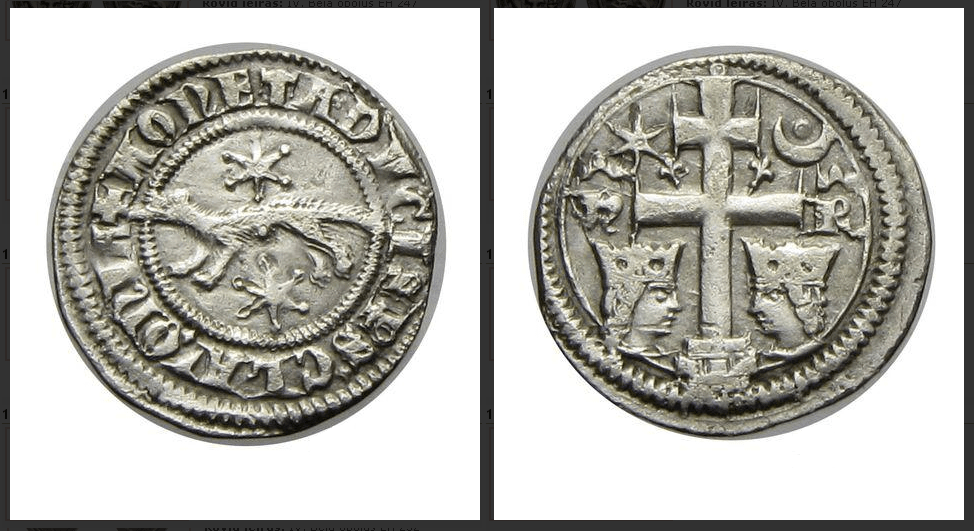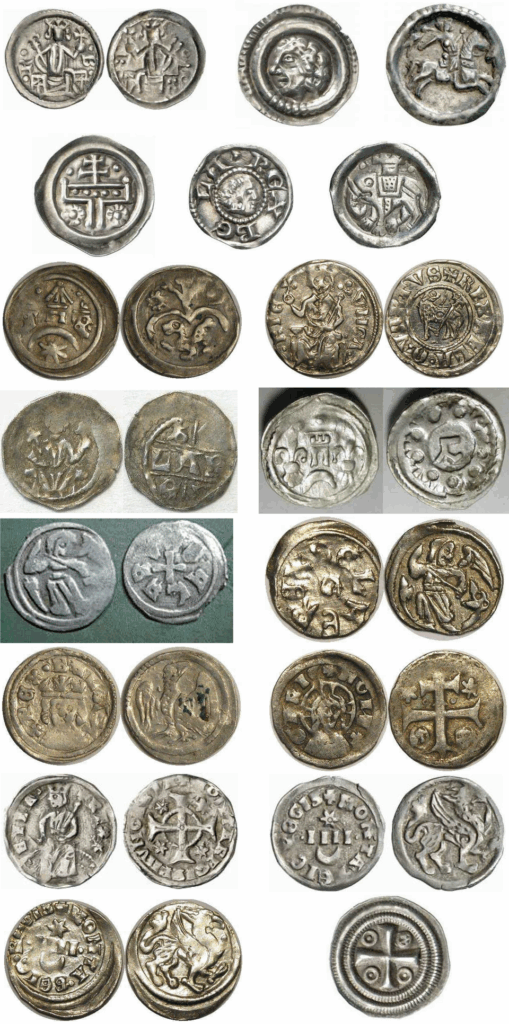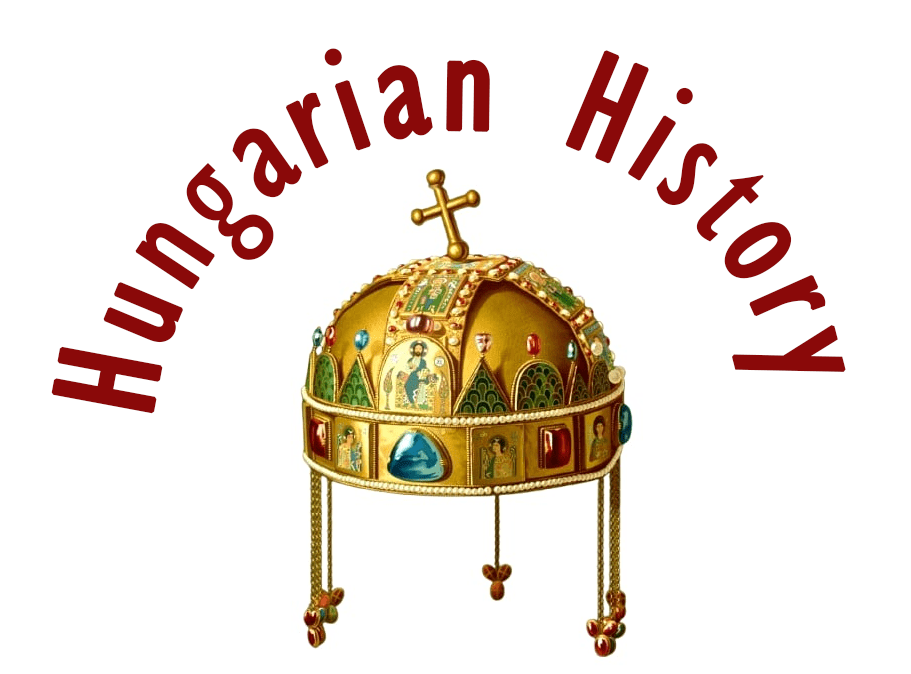
On 14 October 1235, Béla IV (r. 1235-1270), the eldest son of King András II (r. 1205-1235) and Meráni Gertrudis, was crowned King of Hungary for the second time. Béla, whose independent reign had begun with the Mongol hordes ravaging the country, rebuilt and strengthened the almost destroyed Hungarian state in the later decades of his reign, and is therefore rightly called by posterity “our home’s second founder”.

Béla was born in 1206, after the accession of King András II to the throne. Still, his childhood as a claimant to the crown was a turbulent one: he was only 7 years old when his mother, Gertrudis of Meran, was slaughtered in the forest of Pilis by conspiring nobles, probably in front of his eyes, and later he became an instrument of political intrigue. In 1214, the country’s most powerful lords succeeded in ensuring that András II crowned his eldest son and gave him an independent court, which his supporters then used against the weak-hearted king, who handed out his possessions with a light heart.

The young prince’s ambition for power certainly played a significant role in the deterioration of the relationship between András and Béla, who was reaching adulthood, but their relationship would probably not have become so strained if the overlords had not blackmailed the elderly king with his eventual accession. This constant conflict later led Prince Béla to forcefully claim the dukedom of Slavonia and then Transylvania, where he was to rule as ‘lesser king’ until the death of András in September 1235.

On 14 October 1235, the Archbishop of Esztergom placed the Holy Crown on Béla’s head for the second time. Béla was perhaps too forceful in his efforts to achieve his goals: having experienced the weakness of András II, the new king sought primarily to restore his authority, which, due to the patrimonial – i.e. land-based – nature of the monarch’s power, he could achieve by taking back the estates and offices that his father had once donated. Needless to say, this ambition soon brought the nobility into opposition to Béla, and unfortunately for the country, this happened at a time when our country was in the sights of the Mongol horde, the most powerful army in the world at the time.

Although the distant empire had already made itself known through the travel account of Friar Julian and the letter of 1237 of Grand Khan Ogodej (r. 1229-1241), calling for homage, Béla IV only took the threat seriously when the “Tartars” appeared near the Carpathians in 1239-40. His landlord policy had by then brought his support for the king to a low point, and his image was further damaged by his acceptance of the pagan Cumans in 1239, whom he intended to use to defend the country in the face of an expected Mongol invasion. Although Béla’s decision was a very sensible one, the lifestyle of the nomadic Cuman tribes soon caused serious social tensions in Hungary, which came to a boiling point just when the threat was at its greatest.

On the eve of the Mongol invasion led by Batu Khan, in the spring of 1241, the royal troops were already camped at Rákos when some noblemen assassinated the Cuman Khan leader Kötöny, encouraging the nomads to abandon Béla and burn the settlements in their path. As a result of the assassination, the king, who had been essentially abandoned by the western monarchies, was forced to embark on the campaign, which ended tragically with the famous Battle of Muhi (11 April 1241), amid general hostility and without his best warriors. As a result of errors in the Hungarian leadership, the Tartars won a crushing victory at the River Sajó, and Béla was lucky to escape from the battlefield.

While the Mongolian looting led to the worst demographic and economic disaster in the history of our country, the king also went through his calvary: Béla first fled to Vienna to seek help from the Austrian Prince Frederick of Bohemia (r. 1230-1246), but Frederick took advantage of his plight to first plunder him and later forced him to give up several western counties in favour of the duchy. The king was forced to give in to blackmail, and in early 1242, he moved on, with the Mongols crossing the Danube and raiding the western half of the country in his wake. Béla finally found refuge in Trau, now Trogir, on the Adriatic coast, and remained in the castle until the Batu armies, who were leaving the country, presumably because of the death of Oegodej, abandoned the country.

But the returning king found the once prosperous land a barren wasteland, its cities a smoking ruin, and its population largely murdered or carried off. After the experience of the previous years and the Tatar invasion, the ruler adopted a new, more tolerant policy, focusing on preparing for a possible new Mongol invasion: after 1242, Béla was even willing to donate land in return for the building of stone castles by noblemen, and he set a good example.

As a result of the king’s encouragement – compared to the seventeen fortifications before the Tatar invasion – by the time King István V (r. 1270-1272) ascended the throne, there were already more than a hundred fortifications in the country, and by then such stone castles had risen from the ground as Buda Castle or Visegrád, built from a dowry from Queen Maria Lazkaris.

Béla also invested considerable energy in the development of the existing towns, and as a result, trade flourished, while the ruler, who distributed landed estates, was able to make up for lost income with customs duties and other royal revenues. Within a few years, the monarch’s settlements, massive building projects, and economic reorganisation had revitalised a state on the brink of destruction, and he was rightly referred to as the “second founder of the country”. Perhaps the best testimony to the king’s country-building work, comparable to that of St István (r. 1000-1038), is the renewal of the Golden Bull in 1267, which, by declaring the noble status of the serviens, proved to be one of the most important milestones in the development of Hungarian society in the Middle Ages.

Béla’s foreign policy activity also indicates the rapid strengthening of the kingdom, although it is also true that Hungary’s Christian opponents did not leave much time for our country to recover from the devastation of the Tatar invasion. As early as 1242, Prince Frederick of Bohemia launched an unsuccessful campaign to conquer Pozsony, and the Venetian Doge of Dalmatia, who was aiming for Dalmatia, took Zara in 1243. In the following years, the Hungarian king had to fight mainly against Frederick, who defeated the Hungarians in June 1246 at the Battle of Lajta, but was killed in the battle, and the Babenberg dynasty died out.

After the death of the prince, the two neighbouring ruling families, the House of Árpád and the Premysl family, began to rival for the possessions of Frederick, but the struggle remained undecided. In 1253, Béla IV and Premysl Ottokar, King of Bohemia (r. 1253-1278), therefore agreed to divide the Babenberg inheritance. Still, after five years, the Styrian territories ruled by Prince István the Younger rebelled against Hungarian rule, and Ottokar took advantage of the situation to extend his rule as far as the Adriatic. The battle for the Austrian provinces was finally settled in 1260, when the Czech king again defeated Béla’s armies at the Morava River.
The Battle of Kroissenbrunn (the First Battle of Morvamező), 1260
On 12 July 1260, the Battle of Croissenbrunn was fought between King Ottokar II of Bohemia and Béla IV of Hungary. The battle was essentially the last stage of the struggle for the possession of the Duchy of Austria. The composition of the armies on both sides was extremely diverse, with countless nations and nationalities represented. In addition to the Hungarians, Béla’s army included auxiliary troops from Kun, Halych, Russia, Mazovia, Slav, Croatia, Székely, Besenyő, Bosnian, Bulgarian, Serbian, Polish, and Vlach.
The total number of the Hungarian king’s army must have been approximately 30-40 thousand. Ottokar’s army also included Czech, Moravian, Carinthian, Brandenburg, Silesian, Bavarian, and Polish auxiliaries (30-35 thousand in total), which had been sent to the Styrian rebels.
Prince István began the operations by crossing the Morava at the head of an army of some 10,000 men, and using the old cavalry nomad tactics of feigned flight and counterattack, he destroyed a large cavalry army. Ottokar had not yet retaliated, as his army was not yet united, but inexplicably, Béla did not take advantage of the partial victory. István’s troops retreated to the other side of the Morava, and the two armies faced each other for two weeks on either bank of the river.

Finally, at Ottokar’s suggestion, a two-day truce was agreed, while the Hungarian side crossed the river and marched to the battle. Neither Béla nor his son thought that it was a trap. The Hungarian army crossing in the first stage, however, ran into Ottokar’s rearguard, which was retreating, and Ottokar turned back with his heavy cavalry, almost overwhelming the crossing Hungarian light-armed forces. The Hungarian regiment broke up, the army began to flee in panic, and even Prince István, who had already crossed, had difficulty escaping. The Hungarian heavy cavalry, already at a disadvantage, was stranded on the other side, and the battle was fought without them.
The Hungarians lost 10,000 men. After the Hungarian defeat, lengthy negotiations began, in which Béla ceded the Styrian territories, and a marriage treaty was concluded to secure peace. Ottokar II became the German provincial lord with the greatest territorial influence and was in with a chance of becoming emperor.

The failure of the House of Árpád’s foreign policy also had a serious impact on Hungarian domestic politics, as after the heir to the throne was forced out of his estates in Styria, the dynasty’s eternal curse, the throne conflict, reared its head again. István returned to Hungary, and his father carved out a dukedom for him with the Transylvanian part of the country, but the prince sought to extend his rule further west over the years. As in many previous cases, the conflict led to an armed confrontation, probably initiated by King Béla, who imprisoned the heir’s wife and child, but it was Prince István, victorious at the Battle of Isaszeg in 1265, who emerged victorious.

The monarch seemed to have reconciled with his son at the end of the war, but their differences remained for the remaining five years of Béla’s reign, and paradoxically, one of our most important kings closed his eyes in 1270 by offering his wife and her followers to the shelter of his most bitter enemy, Ottokar Premysl. The struggle between King István and King Béla IV was perhaps one of the saddest chapters of the reign of our ‘second founder’, especially as this conflict would later seal the fate of King István V – and in many ways the House of Árpád.

Source: Rubicon Magazin (Tarján M. Tamás)
Dear Readers, I can only make this content available through small donations or by selling my books or T-shirts.
Please, support me with a coffee here: https://www.buymeacoffee.com/duhoxoxa
You can check out my books on Amazon or Draft2Digital. They are available in hardcover, paperback, or ebook:
https://www.amazon.com/dp/198020490X or at https://books2read.com/b/boYd81

My work can also be followed and supported on Patreon: Become a Patron!http://Become a Patron!
Become a Patron! Donations can be sent by PayPal, too: https://tinyurl.com/yknsvbk7


https://hungarianottomanwars.myspreadshop.com/all
Subscribe to my newsletter here: https://tinyurl.com/4jdjbfkn

